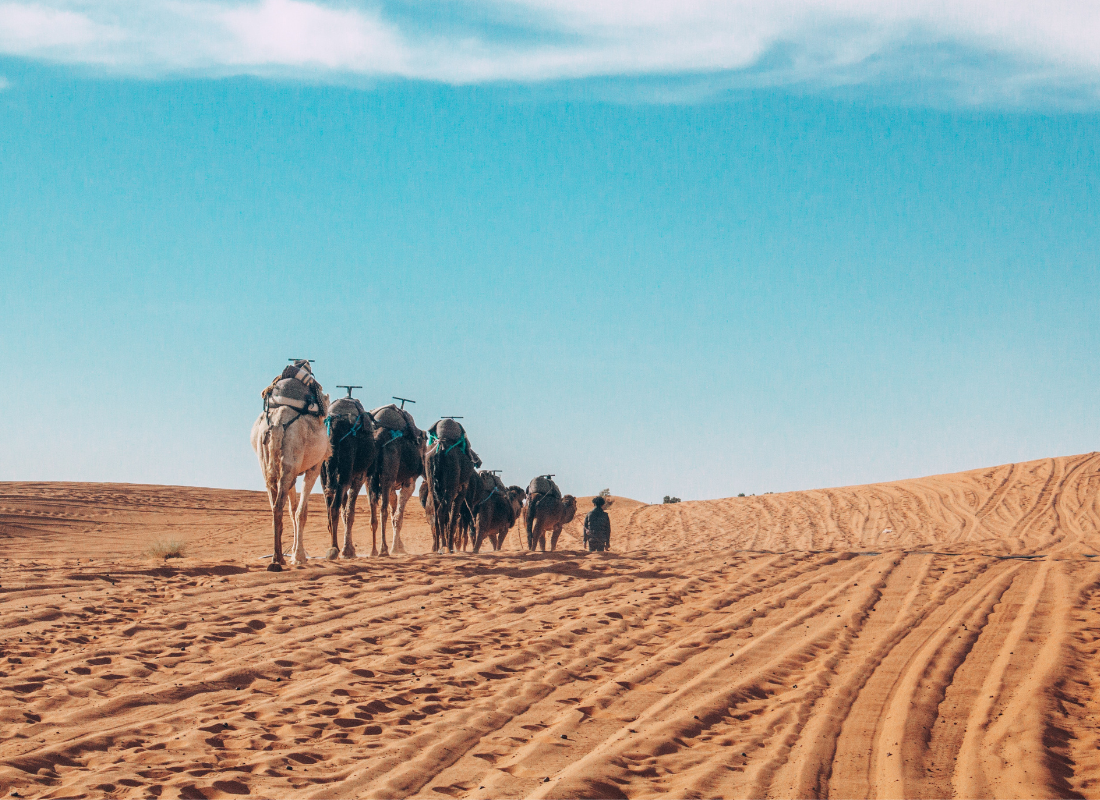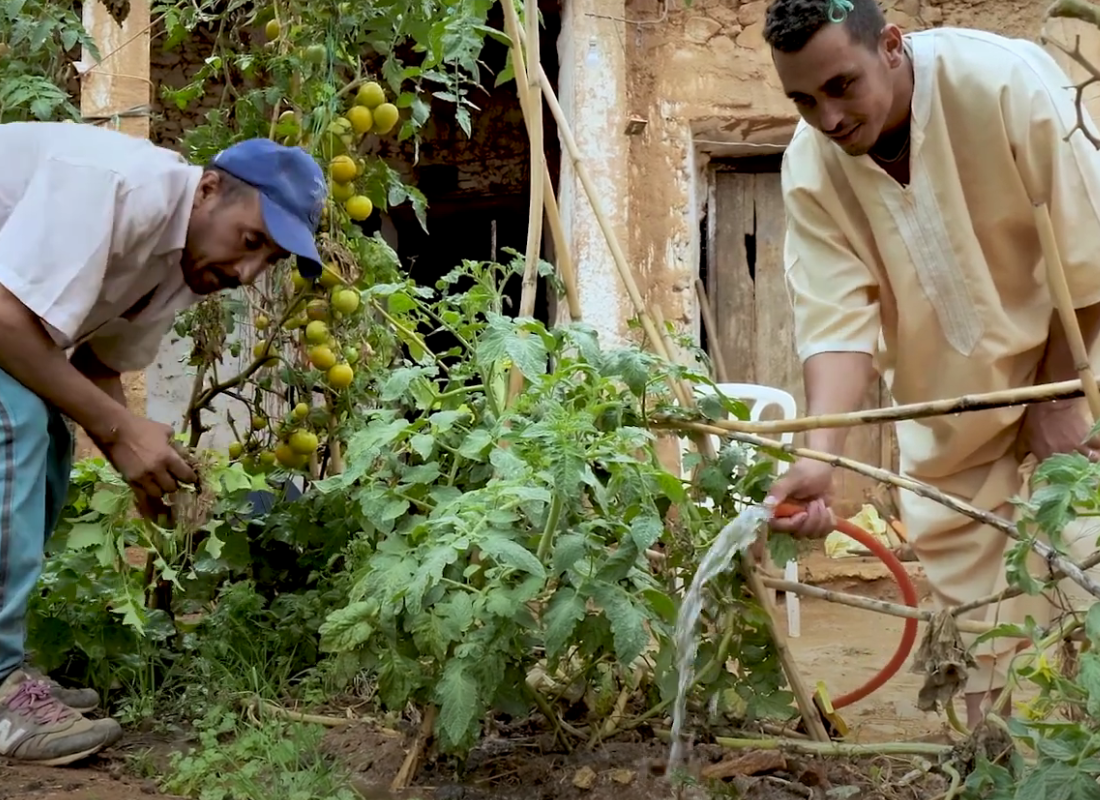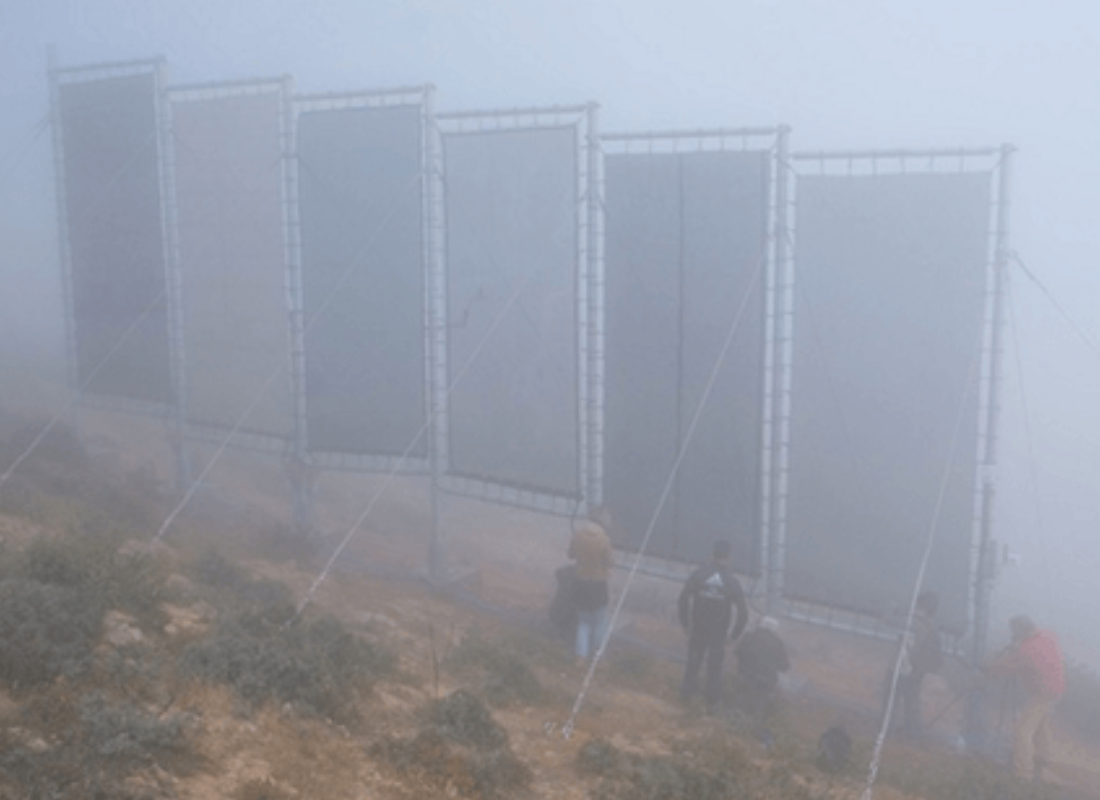
In the arid landscapes of Morocco, the scarcity of water has always been a pressing challenge. The country’s desert climate and fluctuating seasonal rainfall patterns make accessing fresh water difficult, especially in rural regions.
But an innovative solution, aptly named “cloud fishing,” has been making waves, capturing water from the air to support communities living in some of Morocco’s driest regions. This cutting-edge initiative combines traditional knowledge with modern technology, showcasing how Morocco is leading by example in addressing water scarcity and climate change resilience.
The Concept of Cloud Fishing
Cloud fishing, or fog harvesting, is a process of collecting water droplets from fog, utilizing large mesh nets stretched between poles. These nets capture tiny water droplets from the mist that often forms in mountainous areas and condenses them into liquid water.
This water then trickles down into collection troughs, where it’s stored or directed through pipelines for use by nearby communities. In regions where fog is frequent, cloud fishing has the potential to provide a sustainable source of water with minimal environmental impact.
The term “cloud fishing” might seem poetic, but it captures the essence of this effort — drawing life-giving resources from ephemeral clouds in the sky. The idea isn’t new. Ancient civilizations in regions with seasonal fogs have long used rudimentary forms of fog collection, but today’s techniques are enhanced by technology that makes water collection more efficient, reliable, and accessible.
 (Source: https://www.designboom.com/technology/cloudfisher-fog-net-water-foundation-02-02-17/)
(Source: https://www.designboom.com/technology/cloudfisher-fog-net-water-foundation-02-02-17/)
Morocco’s Environmental Landscape and Water Crisis
Morocco’s geographical and environmental factors contribute significantly to its water scarcity. The country is bordered by the Sahara Desert to the southeast, which brings high temperatures and dry winds that exacerbate water evaporation. Rainfall is limited, irregular, and concentrated mostly along the northern coast. Meanwhile, rapid urbanization and agricultural demands increase the strain on existing water supplies.
In rural and mountainous regions, such as the Anti-Atlas Mountains, inhabitants face severe water shortages. Wells and other traditional water sources are either drying up or located at distances too far for regular use. The lack of potable water and sanitation facilities impacts health, economic stability, and educational opportunities, especially for women and children who often bear the burden of water collection.
The Cloud Fisher Project: Pioneering Fog Harvesting in Morocco
One of the most notable cloud fishing projects is taking place in the Anti-Atlas region, where the Dar Si Hmad Association, a Moroccan NGO, established Africa’s largest fog-harvesting network in 2015. The project was specifically developed to address the water needs of Berber communities around the village of Ait Baamrane, whose residents often faced long, arduous journeys to fetch water.
Dar Si Hmad’s initiative, named the Cloud Fisher Project, introduced the latest German-engineered fog-harvesting technology called CloudFisher. These are large, durable mesh nets made from a polyethylene material optimized for high water collection rates and resilience to harsh weather conditions. This design improves upon older mesh models, as the CloudFisher nets can withstand strong desert winds, heavy rains, and UV exposure, making them more reliable and sustainable over time.
Since its installation, the Cloud Fisher Project has changed lives in Ait Baamrane. The fog-harvesting network now spans dozens of nets and collects an average of 6,300 liters of water each day. This water is directed into a network of pipes, bringing fresh water directly to homes and schools, transforming the lives of local women and children who previously spent hours walking to water sources.
The impact is profound: fewer people are leaving the region due to water scarcity, health conditions are improving, and time previously spent fetching water is now invested in education and community development.
 (Source: https://www.designboom.com/technology/cloudfisher-fog-net-water-foundation-02-02-17/)
(Source: https://www.designboom.com/technology/cloudfisher-fog-net-water-foundation-02-02-17/)
How Cloud Fishing Works: The Science and Technology
The basic mechanism of fog harvesting is deceptively simple. When fog moves through the mesh, water droplets adhere to the surface of the net. Gravity then causes these droplets to coalesce and drip down into a collection trough. In Morocco’s mountainous areas, fog is abundant, and the cold night air causes moisture to condense, creating perfect conditions for fog harvesting.
Cloud Fisher nets are designed with efficiency in mind, utilizing a type of mesh that maximizes the surface area available to capture fog droplets. This mesh also features a hydrophilic coating, which increases its ability to “hold on” to the water. The nets are mounted vertically, with a slight angle to direct the collected water into storage troughs below. Connected to pipes, the water flows by gravity into communal tanks, making the water accessible without the need for pumps or electricity.
Additionally, Cloud Fisher nets are modular, meaning that new nets can easily be added to expand the system as community water needs grow. This adaptability is especially valuable for a rural community where resources are scarce, as it allows for gradual scaling and maintenance without large upfront investments.
 (Source: https://www.linkedin.com/pulse/fog-harvesting-fiyaz-p-a-bfu8f/)
(Source: https://www.linkedin.com/pulse/fog-harvesting-fiyaz-p-a-bfu8f/)
The Social and Environmental Impact
The implementation of cloud fishing in Morocco has had a transformative effect, not only on water accessibility but also on social dynamics and environmental sustainability. Since women no longer spend hours each day fetching water, they can engage in education, employment, and other community activities. Children can attend school more regularly, as they are relieved of the responsibility of water collection. Improved water access has also resulted in better hygiene and reduced waterborne illnesses.
Environmentally, fog harvesting is a highly sustainable solution. Unlike groundwater extraction, which can lead to depletion and land subsidence, fog harvesting does not harm local ecosystems. The water is drawn from atmospheric moisture that naturally regenerates and does not deplete over time. Cloud fishing also does not rely on energy-intensive infrastructure, making it a low-carbon, eco-friendly water solution.
Furthermore, the use of fog harvesting in Morocco’s cloud fishing projects underscores the importance of resilience in the face of climate change. As temperatures rise and rainfall patterns shift, traditional water sources may become even less reliable. Fog harvesting, however, depends on fog, which is less likely to be impacted by climate change in Morocco’s mountainous regions. This makes cloud fishing a forward-looking solution that anticipates and adapts to a changing climate.
Challenges and the Future of Cloud Fishing in Morocco
While cloud fishing has proven to be effective, there are challenges to expanding its use. One issue is the initial cost of installing the nets and pipelines, which can be significant, especially for remote communities with limited financial resources.
Although the CloudFisher nets are designed to be durable, they still require maintenance, and training local people to handle repairs can be a challenge. Additionally, fog harvesting only works in specific geographic areas, where conditions allow for consistent fog formation.
Despite these limitations, cloud fishing holds great promise for Morocco and other water-scarce regions. Expanding this technology to additional communities could alleviate water stress for thousands more people. There is also potential for pairing cloud fishing with other innovative water technologies, like rainwater harvesting and solar desalination, to create a comprehensive water solution for rural Morocco.
Efforts are underway to refine the technology further, making it more cost-effective and suitable for diverse environmental conditions. The success of the Cloud Fisher Project has attracted international interest, with environmentalists and NGOs from around the world seeking to learn from Morocco’s experience.
 (Source: https://www.designboom.com/technology/cloudfisher-fog-net-water-foundation-02-02-17/)
(Source: https://www.designboom.com/technology/cloudfisher-fog-net-water-foundation-02-02-17/)
Conclusion
Cloud fishing in Morocco is more than a technological solution; it is a symbol of resilience, sustainability, and innovation in the face of adversity. By capturing water from fog, Moroccan communities are embracing an ingenious way to combat water scarcity and improve the quality of life for thousands of people.
This simple, low-impact method of harvesting water showcases Morocco’s commitment to environmental stewardship and sustainable development, serving as an inspiring example of how nations can adapt to the challenges posed by climate change.
As cloud fishing continues to expand in Morocco and beyond, it represents a beacon of hope for arid regions worldwide. Through technology, collaboration, and a deep respect for the natural environment, Morocco’s cloud fishing pioneers are proving that sometimes, the solutions to our greatest challenges are floating right above us, waiting to be harnessed.



 (Source: https://www.linkedin.com/pulse/fog-harvesting-fiyaz-p-a-bfu8f/)
(Source: https://www.linkedin.com/pulse/fog-harvesting-fiyaz-p-a-bfu8f/)



